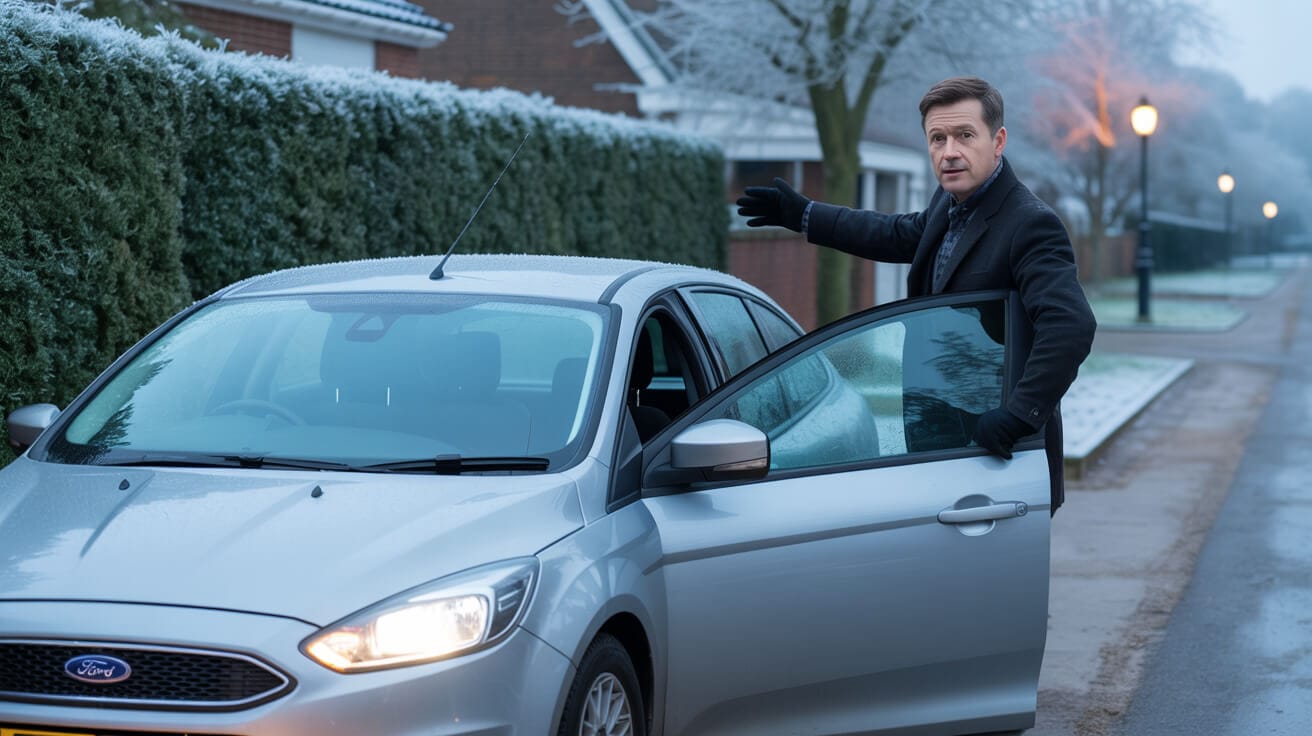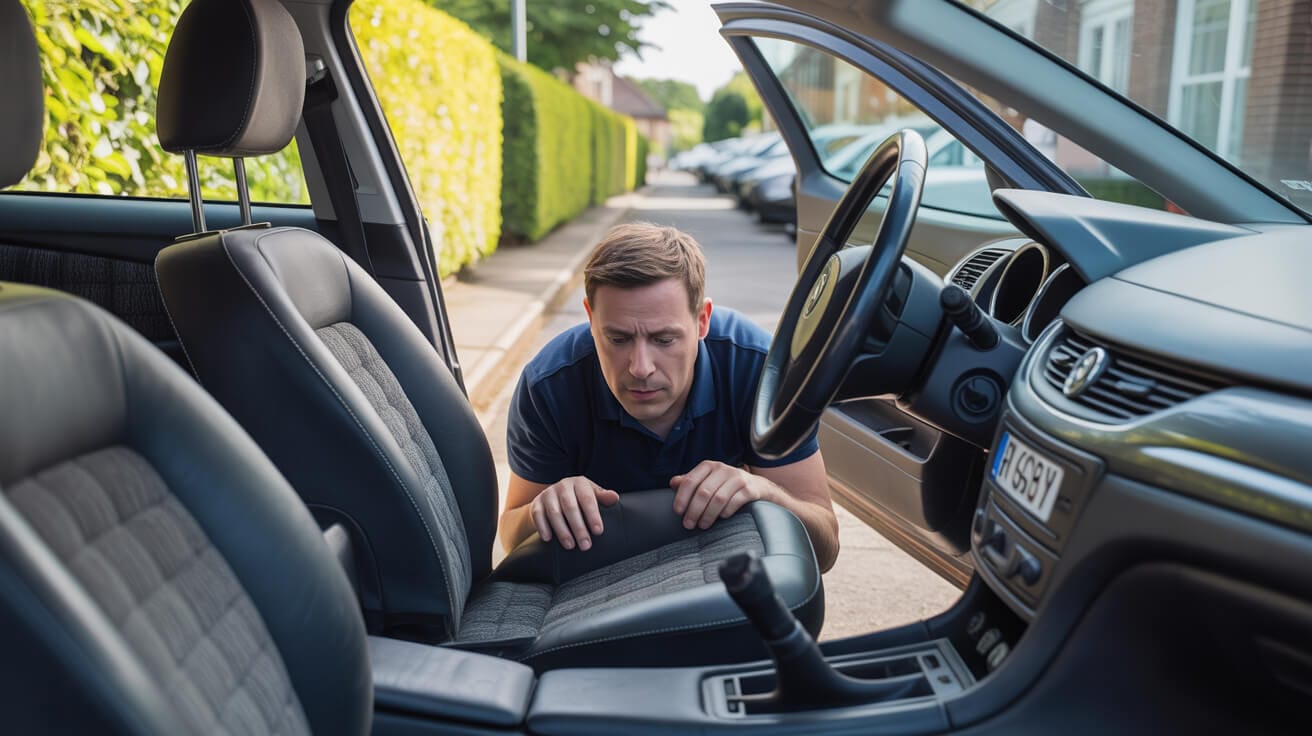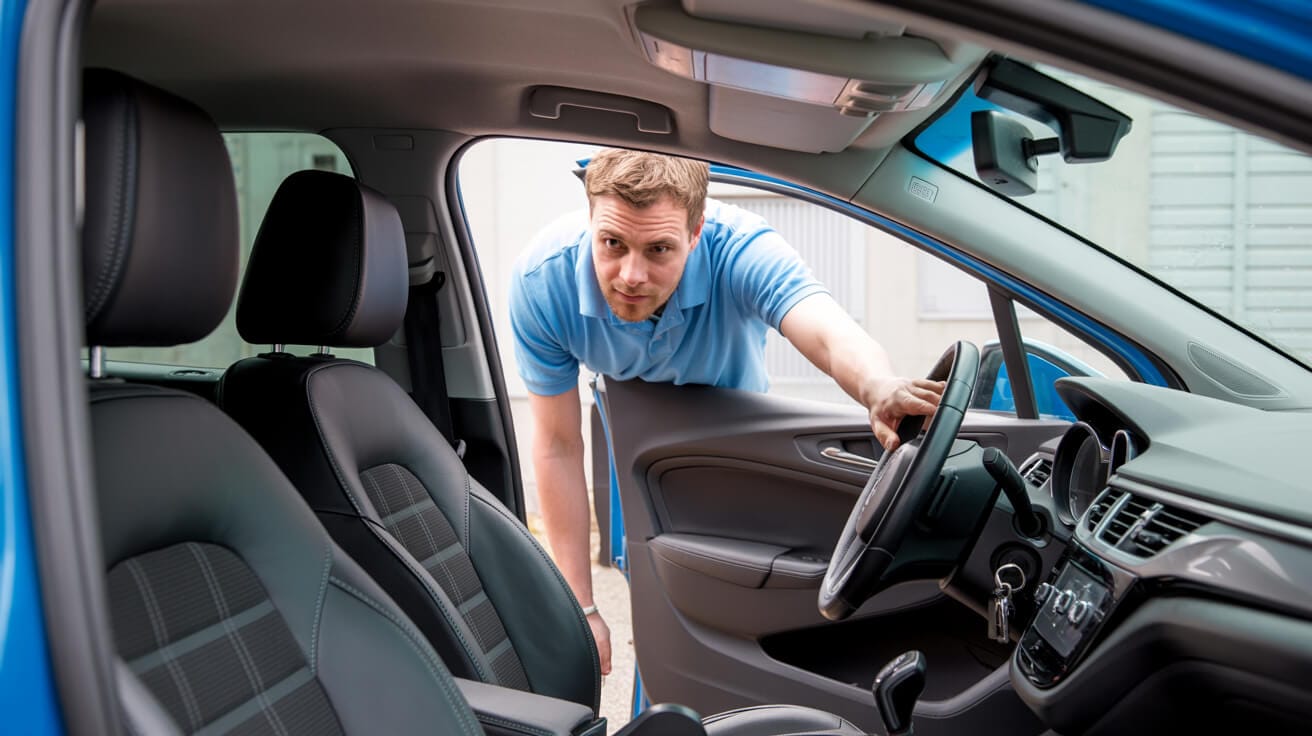Why Are Car Keys Stuck in the Ignition—And How Should You Respond First?
Discovering your car key stuck in the ignition can trigger panic, but a clear, deliberate response protects your vehicle and your wallet. In the UK, the most common causes include plain mechanical wear inside the lock barrel, steering wheel pressure locking the mechanism, selector levers not properly set to “park” or “neutral,” failing batteries—either in your car or your remote—and glitches in digital immobiliser authentication. Many troubles are preventable with early attention and smart choices. The shortest route to an expensive repair is usually impatience or force.
A careful self-check can often solve the simplest problems:
- Is your gear lever set correctly?
- Is your steering wheel putting pressure on the lock?
- Are any dashboard indicators suggesting battery or immobiliser troubles?
If gentle checks don’t free the key, ignore videos or advice about twisting, spraying, or yanking. Force damages the lock and could break your key, leading to a much costlier fix. Every attempt at a shortcut piles on future headaches—warranty voided, insurance risks, maybe even a steering column replacement.
When you slow down, you save more than time—you protect your investment.
If you hit a dead end, call an emergency automotive locksmith. The cost is less than the spiral of problems a rushed “fix” can unleash.
What causes a car key to get jammed in the ignition?
Keys often jam from worn barrels, steering wheel pressure, wrong gear selection, weak batteries, or glitches in digital/authentication circuits. Every year, thousands of UK drivers face this—many because stress pushed them to force the issue.
Should I ever try to ‘jiggle’ or force my key out?
Never force a stuck key. Even a small twist or a drop of oil can make small issues into big faults. Lock barrels, wafer tumblers, and digital systems are engineered for precision—force is not a solution, it’s an escalation.
How Do Non-Destructive Emergency Extraction Services Safeguard Your Vehicle?

A true professional aims to leave zero trace—not just externally, but inside your lock and its electronic memory. Non-destructive extraction is about method—not cutting or drilling unless all gentle methods fail. Modern UK vehicles, especially those with digital or smart ignitions, require an approach tuned to both the hardware and the software.
Your Autolocks Ltd technician starts by documenting the scene, running through checks on gear selection, steering tension, signs of wear in the lock, and (for smart keys) live tests of fob battery and digital “handshake” readiness. Genuine experts arrive with the right tools for your make and model—mechanical bitting gauges for traditional barrels, plus RF/LF testing equipment for electronic fobs.
Every step is captured and logged: photos before, during, and after; diagnostic scans if relevant. When a mechanical key is physically jammed, the technician works incrementally—first realigning, then using extraction tools mapped to your keyway pattern. When a digital issue blocks release, the process pivots to module resets or immobiliser cycle routines, always logged for your warranty and insurance.
The most expensive damage comes from the quickest decisions.
When your service ends, you should receive a “proof pack”: photo records, diagnostic flows, and confirmation that no drilling or forced entry was used.
What are the key steps in a non-destructive extraction?
A non-destructive extraction checks mechanical and digital states, clears tension or sensor faults, documents every action, and uses manufacturer-approved tools—protecting your locks and all warranty positions.
Why is proof of non-destructive process so crucial?
Photos, logs, and a written summary of zero-destructive action are your warranty against future arguments—proof for insurers, resellers, or anyone questioning your vehicle’s service history.
Who’s Legally Allowed to Remove a Stuck Car Key, and What Evidence Should You See?

In the UK, key and ignition extractions are regulated—not just for your vehicle’s security, but also for data protection and lawful ownership. Only certified, insured locksmiths with written proof of owner permission should be touching your ignition. Autolocks Ltd upholds this with strict ID checks, digital logging, and policy-mandated refusal of any job where authority isn’t clear.
Your proof checklist before any extraction:
- Technician’s photo ID and up-to-date credentials (certificates or licence).
- Your own V5C, lease app, or other proof of vehicle ownership.
- A job ticket signed by both parties, with service scope defined.
- Logged records on what tools and systems have been accessed.
- Insurance documentation, shown on request and tied to your job.
All data—photos, logs, module access records—are encrypted and only kept as long as necessary.
Security is not a slogan—it’s the foundation of trust for every job.
Unlicensed, anonymous “cheap fixers” put your data, warranty, and even your vehicle’s registration at risk. Always demand full traceability.
Who checks that locksmiths operate legally?
Certified technicians follow national and European standards for technical safety, data management, and traceable service. Regulatory and trade bodies can audit provider records at any time.
What documentation should you keep?
Keep the extraction summary, all photos, ID scans, module access logs, guarantee certificates, and handover receipts. This pack will protect you on warranty, insurance, or theft claims.
How Do Experts Extract Keys From Modern Ignition Systems—Mechanical and Digital?

Professional extraction blurs the line between mechanical craftsman and field diagnostic engineer. Whether your vehicle runs on a classic key barrel or the latest smart fob, the underlying process follows auditable, model-specific steps.
- Confirm the selector lever is correctly positioned and steering is untensioned.
- Inspect the keyway for debris, wear, or misalignment.
- Map the lock’s tumblers using appropriate bitting and decoding tools.
- Insert and align extraction tools, applying light, precise pressure.
- Document each stage and gently restore the system.
Only when necessary—after all non-destructive routes are exhausted—does the technician partially disassemble trims, always retaining and recording parts for verified reinstallation.
Digital & Smart Ignition—Electronic Protocol:
- Test fob batteries, RF/LF communication, and immobiliser handshake.
- Scan for diagnostic trouble codes (DTCs); check network and module status.
- Reset or sync digital systems via approved, audit-logged tools.
- Live demo of every function: lock, unlock, start, alarm.
- Provide logs and photo evidence at handover.
A methodical process protects not only your key and barrel, but also your whole security chain and future resale value.
Are you allowed to watch or document the work?
Yes—professional locksmiths encourage oversight and will transparently log every material action. Your right to a clear explanation is built into modern service protocols.
When does a lock or ignition need full replacement?
Full replacement is only considered if irreparable physical damage exists or a digital system is security-compromised—and you’ll approve every step, with written consent, much earlier in the process.
What Are the Hidden Costs and Risks of Forced Extraction and DIY Fixes?

A stuck key tempts rushed fixes. Most end badly. DIY “hacks” or force-based shortcuts—prying, drilling, oil-spraying—destroy more than hardware: they void your warranty, short-circuit electronic integrity, and create lasting audit traces in digital logs.
Expect these failure modes from unskilled efforts:
- Internal lock damage disabling steering or triggering unexpected airbags.
- Electrical faults from shavings or shorted contacts.
- Electronic module “red flags” in audit logs, which manufacturers use to deny claims.
- Visual signs on barrel or fascia that reduce resale value by hundreds or thousands.
- Data-logged evidence that makes warranty, insurance, or fleet claims difficult.
The worst shortcuts aren’t just visible—they’re permanent, in your car’s digital memory.
Cheap, untracked repairs become expensive, ongoing risks. Even a single forced or undocumented entry can bar service from main dealers or fleet contracts.
How do you spot risky or non-compliant providers?
Watch out for anyone who skips ID verification, refuses detailed documentation, or pushes for destructive options first. Their “quick fix” becomes your ongoing problem.
Could a DIY fix really void my warranty or insurance?
Yes—manufacturers and insurers look for audit logs or visual clues of forced entry, making it standard to refuse coverage for unauthorised repairs or missing service documentation.
Why Do Service Standards, Transparent Audit Trails, and an Authorised Handover Protect You?

The invisible guardrails of modern emergency service are the documented record—photos, logs, digital trails—that prove to you, insurers, and future buyers your car was serviced safely, lawfully, and traceably.
Autolocks Ltd’s process gives every owner strong protection:
- Every step and tool use is logged to the job, your name, and time of access.
- Photos document before/after condition, plus module and system states.
- Handover always includes a live demonstration: every lock and electronic function must be tested and presented.
- Aftercare and guarantee/warranty terms are delivered, in writing, at the finish.
- All records are encrypted and only held as long as compliance requires.
Today’s documentation is tomorrow’s proof—against disputes, future issues, or a resale challenge.
Owners, fleet managers, and even main dealers rely on these records to manage rights, value, and compliance. Skipping this step leads to disputes, lapsed cover, or worse.
How long are records kept, and can you access them?
Compliance and business requirements set the timeline (years for warranty work, less for one-off jobs)—all documentation is available to you, and deletion is controlled, not arbitrary.
What should you expect at handover, every time?
A walk-through of what was done, proof of full function, written warranty/aftercare, and a secure bundle of all records for your files.
What’s the True Emergency Workflow—From the Moment You Call?

Calling for emergency help with a stuck car key shouldn’t add to your stress. At Autolocks Ltd, every minute is mapped to a smart process that’s transparent from ride out to handover.
- Intake: Share your details (vehicle, location, ID). Get an upfront quote and explicit service timeline.
- Identity Check: Proof of ownership/active authority is verified before we set out.
- Dispatch: Technician matched by skills, equipped for your model, navigates London/UK traffic in real time.
- Arrival: Technician reconfirms identity, sets work scope, logs the scene before touching the car.
- Extraction: Non-destructive, model-specific tools and techniques—each action logged as evidence.
- Demo & Handover: You see every restored function—lock, start, alarm—with proof in hand.
- Aftercare & Review: Warranty terms, aftercare notes, payment, and a simple, straightforward review link.
Each step is designed to protect your vehicle and your interests—not just fix the problem.
In an emergency, predictable steps outclass speed or guesswork.
Communication is proactive—expect ETA updates, transparent options, and real-time progress.
What are typical response times in the UK?
Urban coverage can achieve 60–90 minute average ETAs, with constant updates if running late or conditions change.
If your plans or needs change mid-job, what then?
Updates—including new instructions, changed timeframes, or multi-vehicle/fleet requirements—are dynamically managed by dispatch. All you need to do is notify, and the workflow adapts.
What About Aftercare, Warranty, and Stopping Future Repeat Issues?

A resolved emergency should deliver more than just a freed key. The best service ensures you leave with everything you need to keep the problem from returning (or escalating). At handover, your technician will cover aftercare, warning you what minor changes could spell future trouble, and commit to follow-up support.
Aftercare Routine for Safe Ignition Use:
- Confirm all movement and “feel” in ignition and steering lock post-fix.
- For smart keys, check battery strength and remote function (test each button).
- Review and adjust all auto-lock and selective-unlock settings you use.
- Save your documentation—photos, reports, digital logs—for proof and prevention.
- If anything changes or feels off, contact your provider for a rapid, warranty-backed checkup.
The best warranty is a simple, direct channel back to your expert.
Fleet and contract clients get integrated aftercare, compliance support, and help with reporting or audits—all part of a proactive, value-first approach.
Can aftercare steps prevent future stuck keys?
Absolutely. Small details—catching early signs of wear, refreshing batteries, keeping lockways clean—prevent a stuck key from becoming an expensive chain of problems.
What is included in warranty or guarantee coverage?
Autolocks Ltd covers both parts and labour for any authorised replacement, and all non-destructive extraction work. Fleet clients gain compliance documentation, matched to contract requirements.
Why Booking With an Authorised, Evidence-Logged Service Is Your Best Move Now
A stuck key—mechanical or digital—is not a test of brute force. It’s a test of security, discipline, and commitment to your car’s long-term value. When you book Autolocks Ltd, you don’t just “get in and drive off”—you invest in a process built to prove your rights, protect your investment, and keep every stakeholder happy.
Expect:
- Full price and timeline transparency, matched to your need
- Only authorised, trained technicians—no “cowboys,” ever
- Model-specific tools and on-the-van stock for virtually every make
- Encrypted, audit-logged evidence packs for your record, insurance, or resale
- Written warranty and aftercare; responsive, no-hassle support
When you control the process, you control the outcome.
Choose Autolocks Ltd every time you want non-destructive, evidence-logged car key extraction for mechanical, smart, or digital ignition. If you put a premium on security, transparency, and having every detail defensible for insurance or resale, our team is ready to serve—anywhere in the UK, any time.
Frequently Asked Questions
Why Do Car Keys Get Stuck in the Ignition—And What Should You Never Do First?
Car keys often get stuck in the ignition because modern vehicle systems tie mechanical and digital security into a single, tightly sequenced chain. Most UK ignition jams trace to a handful of root causes: worn barrels or keys, tension from a locked steering wheel, incorrect gear selection (not in “park” or “neutral”), an undercharged battery, or a digital handshake misfire between key, immobiliser, and ECU. What you do next determines whether this is a quick fix—or a costly escalation.
Never force the key, spray lubricants, or try popular “hacks.” Even small missteps risk damaging lock internals, triggering digital security flags, or incurring warranty problems. Instead, pause. Check gear position, gently relieve steering tension, and observe dashboard warnings for signs of battery or immobiliser error.
The fastest fix is almost never the hardest push—it’s the first moment you slow down.
If a gentle sequence fails, your best leverage comes from calling an authorised UK auto locksmith. This preserves all digital and mechanical audit trails, keeps insurance and warranty paths open, and locks in your rights as a vehicle owner.
Is it safe to “jiggle,” spray, or force a stuck key?
No. Modern locks respond to precision, not brute force—one “jiggle” can fracture delicate tumblers or record an error event.
Could worn keys, digital errors, or battery weakness be the cause?
Yes. Barrel and key wear, low battery, or even a brief signal blip can trip immobiliser thresholds. All are fixable—but only with calibrated, model-matched service.
How Do Non-Destructive Auto Locksmiths Extract Keys Without Damage or Warranty Risk?
Non-destructive extraction is now the UK-approved gold standard, and the only route accepted by most insurers and manufacturers. Here, every step—diagnosis, tool choice, and audit trail—is engineered to protect your lock, ECU, and resale value.
When you engage Autolocks Ltd, the process is rigorously sequenced:
- A certified technician arrives and documents the vehicle state, logging photos and environmental conditions.
- A stepwise check of gear, steering, lockwear, and all digital signals (battery, immobiliser, security warnings) is completed.
- Only model-approved extraction tools are used—never drills, force, or generic “slim jims.”
- Each action is timestamped, with physical and digital evidence bundled for your protection post-fix.
Rushing almost always costs more than waiting for the right tools.
At close, you receive a record: before/after photos, module event logs, and a live handover proving every system restored. Insist on this—future warranty and claims depend on non-destructive, provable care.
What’s included in “evidence pack” documentation?
You get digital photos, scan/download of all module accesses, warranty-accredited proof of process, and demonstration of every function—one bundle to protect you long-term.
Will insurance or dealer coverage flag “forced” jobs?
Repeatedly, yes. Destructive extractions or undocumented steps show up in both digital memory and physical audit, often resulting in denied claims or warranty refusal.
Who Is Legally Authorised to Remove Your Ignition Key—And What Proof Should You Demand?
Only a certified, insured, and ID-verified UK auto locksmith can lawfully extract an ignition key. Legal, insured fixes demand a documented evidence trail. Quick, undocumented jobs risk voiding insurance, regulatory penalties, and future support from manufacturers.
The right checklist empowers you:
| Evidence | Required | Why It Matters |
|---|---|---|
| Tech ID & Certification | Yes | Proof of skill and insurance |
| Ownership Record | Yes | V5C or lease doc—prevents disputes |
| Signed Work Order | Yes | Defines liability and scope |
| Module/Photo Logs | Yes | Essential for claims and audit |
| Insurance Docs | On request | Solidifies peace of mind |
| Aftercare & Warranty | Yes | Ongoing rights and compliance |
Security comes from records, not promises—a shortcut leaves you holding the risk.
Unlicensed “cowboy” jobs are easily detected: lack of ID, hidden steps, refusal to document, or price confusion nearly always signal trouble. Real professionals encourage oversight and hand over every proof at the finish.
Who checks compliance and proof?
First, you: demand clear records. Then, insurers, main dealers, and regulators—all of whom verify method and traceability before approving claims or further work.
How Do Experts Remove Keys from Both Mechanical and Digital Ignition Systems?
Professional extraction is now as much a digital task as a mechanical one. Autolocks Ltd pairs technical skill with model-specific electronic protocol, giving you confidence for every make from classic Ford to digital BMW.
Mechanical Ignitions:
- Confirm gear and steering position to release hidden lock tension.
- Inspect barrels for wear/debris, using precision decoders and extractors.
- Incrementally manoeuvre tools to avoid stress or fracture—logging each step.
- Restore barrel and surrounding trim to OEM alignment.
Digital/Smart Ignitions:
- Test and if needed, replace key/fob batteries (and record the action).
- Use OEM scan tools to retrieve immobiliser/security codes and error states.
- Run authorised resets or synchronisations with manufacturer-approved software.
- Handover moment: you test every function—lock, unlock, start, alarm—while your technician logs results and downloads compliance logs.
A sequence protects more than the key; it shields system memory and future audit for years.
What if replacement is needed?
Only irreparable wear or digital flagging should prompt barrel/module replacement—and you sign off beforehand.
Can you observe or request every step and record?
Yes. Top technicians invite your oversight and ensure all evidence is in your hands, often before parting.
What Are the Most Dangerous Hidden Risks of Forced Extraction—or DIY “Quick” Fixes?
Trying to “fix” a stuck key with aggressive DIY tactics, adapters, or unskilled labour nearly always backfires. The most frequent (and costly) failures:
- Fractured lock barrels, often disabling the car or steering wheel for good.
- Shorted lock wiring or accidental airbag triggers from poorly managed prying.
- Digital “red flag” logs for forced entry or unauthorised access—now checked at every warranty or insurance call.
- Scratched or marred trim, barrels, or dashboards, reducing your car’s trade and resale value.
The worst shortcuts scar your records and your wallet—sometimes forever.
Insurers and main dealers audit for these traces. One forced fix can blacklist you from future support and force out-of-pocket repair or replacement.
How to spot an unlicensed or non-compliant operator?
If you’re denied ID, proof, or a clear breakdown of every step and tool, walk away. Destructive first approaches, vague pricing, or refusal to document flag bigger hidden costs.
Can insurance or warranties be voided by forced or DIY jobs?
Almost always yes—audits spot unapproved access and refuse coverage for all related or future faults.
How Do Service Standards and Audit Trails Protect You, From Intake to Aftercare?
From the moment you call Autolocks Ltd, your case is ringfenced by process:
- Your identity and vehicle authority are checked and logged.
- Every step—photos, module access, and repairs—are documented.
- Demonstrations guarantee restored function for every affected system.
- Aftercare and warranty records are supplied in writing, and digital logs are encrypted per UK data law.
- All evidence is available on request for three to six years, protecting your resale and claim rights.
The right records are your best shield against future dispute, audit, or unfair liability.
Main dealers, buyers, insurers—even auditors—now expect seamless records. With Autolocks Ltd, you own yours.
What records must be delivered at every final handover?
Expect: real-time demo, written aftercare, warranty, and downloadable logs—never less.
How do these protocols future-proof your car?
Proof unlocks speedy claims, supports higher trade value, and keeps you covered no matter how rules change.
A stuck key is urgent, but Autolocks Ltd’s process is designed to keep your case in the clear from call to aftercare:
- Intake: Share your problem, get your quote, and verify ID and authority.
- Dispatch: The system matches your vehicle and location to the right van stock and skill set, sending ETA updates as you wait.
- Arrival: Scene is logged, compliance protocols are explained, your preferred handover method set.
- Extraction: Only non-destructive, model-tailored processes are used—never unnecessary force.
- Post-Work: You’re given a live demo, plus logs and aftercare you can access later or hand to dealers and insurers.
- Aftercare & Warranty: Every job delivers practical guidance to prevent repeat trouble and covers every authorised step for compliance.
In a real emergency, you want a process built for audit-proven speed—not just speed.
Urban response can be as quick as 60–90 minutes, with rural clients kept in the loop on every status change and arrival window. Ongoing aftercare ensures you’re never left in the dark and can escalate needs anytime.
Can you adapt or pause the process if circumstances change?
Yes—just let dispatch know. Whether your location, need, or schedule shifts, your workflow is recast in real time, and your audit trail remains protected.
What sets Autolocks Ltd apart for key extraction?
Evidence-based workflow, non-destructive-first, certified technicians, UK law compliance, and records that shield your investment every step of the way. Book the job: your emergency ends with your rights—and your car—fully restored.






